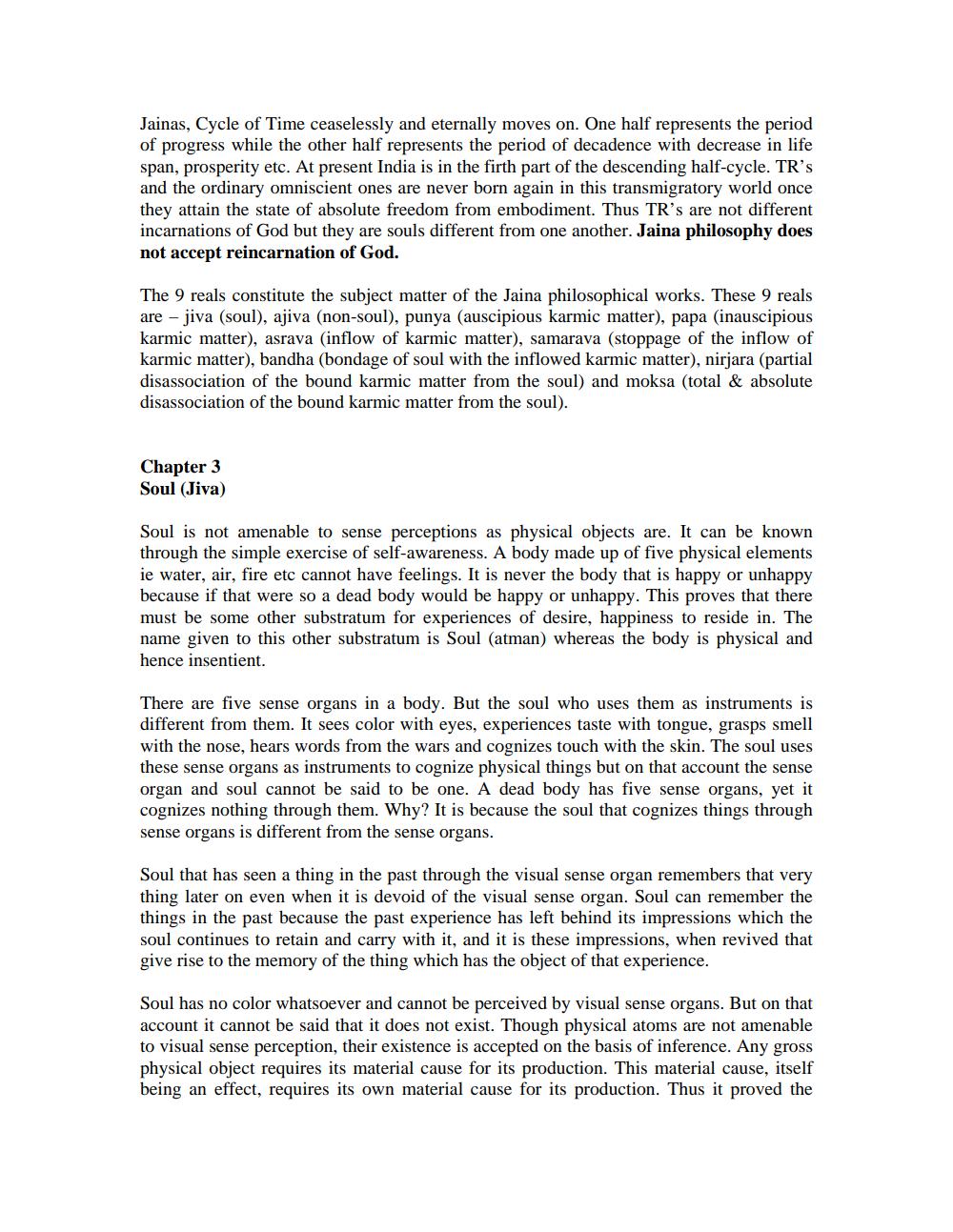Book Title: Essentials of Jaina Philosophy Author(s): Nyayavijay, Nagin J Shah Publisher: Nyayavijay Nagin J Shah View full book textPage 6
________________ Jainas, Cycle of Time ceaselessly and eternally moves on. One half represents the period of progress while the other half represents the period of decadence with decrease in life span, prosperity etc. At present India is in the firth part of the descending half-cycle. TR's and the ordinary omniscient ones are never born again in this transmigratory world once they attain the state of absolute freedom from embodiment. Thus TR's are not different incarnations of God but they are souls different from one another. Jaina philosophy does not accept reincarnation of God. The 9 reals constitute the subject matter of the Jaina philosophical works. These 9 reals are - jiva (soul), ajiva (non-soul), punya (auscipious karmic matter), papa (inauscipious karmic matter), asrava (inflow of karmic matter), samarava (stoppage of the inflow of karmic matter), bandha (bondage of soul with the inflowed karmic matter), nirjara (partial disassociation of the bound karmic matter from the soul) and moksa (total & absolute disassociation of the bound karmic matter from the soul). Chapter 3 Soul (Jiva) Soul is not amenable to sense perceptions as physical objects are. It can be known through the simple exercise of self-awareness. A body made up of five physical elements ie water, air, fire etc cannot have feelings. It is never the body that is happy or unhappy because if that were so a dead body would be happy or unhappy. This proves that there must be some other substratum for experiences of desire, happiness to reside in. The name given to this other substratum is Soul (atman) whereas the body is physical and hence insentient. There are five sense organs in a body. But the soul who uses them as instruments is different from them. It sees color with eyes, experiences taste with tongue, grasps smell with the nose, hears words from the wars and cognizes touch with the skin. The soul uses these sense organs as instruments to cognize physical things but on that account the sense organ and soul cannot be said to be one. A dead body has five sense organs, yet it cognizes nothing through them. Why? It is because the soul that cognizes things through sense organs is different from the sense organs. Soul that has seen a thing in the past through the visual sense organ remembers that very thing later on even when it is devoid of the visual sense organ. Soul can remember the things in the past because the past experience has left behind its impressions which the soul continues to retain and carry with it, and it is these impressions, when revived that give rise to the memory of the thing which has the object of that experience. Soul has no color whatsoever and cannot be perceived by visual sense organs. But on that account it cannot be said that it does not exist. Though physical atoms are not amenable to visual sense perception, their existence is accepted on the basis of inference. Any gross physical object requires its material cause for its production. This material cause, itself being an effect, requires its own material cause for its production. Thus it proved thePage Navigation
1 ... 4 5 6 7 8 9 10 11 12 13 14 15 16 17 18 19 20 21
